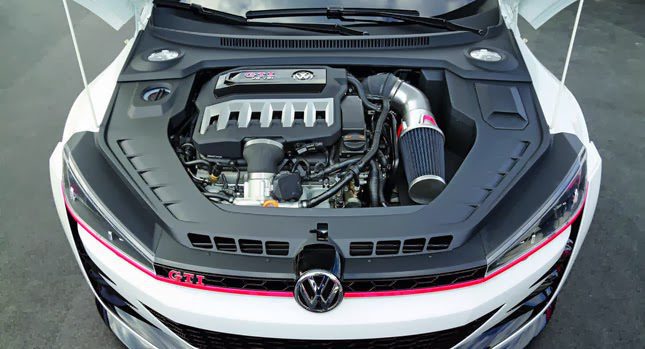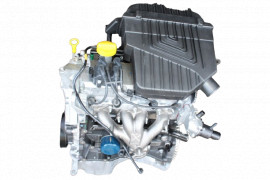Upgrade Your Lorry with a New Opel Corsa Engine
Checking Out the Inner Operation of a Compact Car's Engine System
As drivers, we commonly consider provided the detailed procedures that happen within the confines of our automobile's engine system. The small yet intricate equipment that propels us onward is a marvel of engineering accuracy and sychronisation. From the regulated surges in the burning chamber to the meticulous timing of gas shot, every component plays an important role in the smooth procedure of the engine. In this exploration of a small lorry's engine system, we will certainly decipher the inner workings of this mechanical harmony, shedding light on the mysteries that drive us ahead on our daily trips.
Burning Refine Overview
The burning process in a portable automobile's engine system is a critical device that effectively transforms gas into energy to power the car. This process occurs within the burning chamber of the engine, where fuel and air mix, fire up, and generate regulated surges. The burning process is composed of 4 major phases: intake, power, exhaust, and compression.
During the intake phase, the piston moves downward, pulling in a combination of air and gas right into the burning chamber. The next phase, compression, involves the piston relocating upward, compressing the air-fuel mix to increase its effectiveness. Ultimately, in the power phase, the trigger plug ignites the compressed mix, leading to a rapid expansion of gases that requires the piston back down. This descending motion creates the power needed to drive the car. In the exhaust stage, the burnt gases are gotten rid of from the combustion chamber with the exhaust shutoff, preparing the chamber for the following cycle. This cyclic combustion process is essential to the operation of a compact car's engine system, ensuring reliable power conversion for propulsion.
Piston and Cyndrical Tube Communication

The piston's exact fit within the cyndrical tube is important for preserving optimal compression and protecting against power loss during combustion. Tight clearances in between the piston and cyndrical tube walls make certain efficient sealing, enabling the piston to relocate smoothly without enabling gases to leak past. Correct lubrication is additionally vital to reduce rubbing and put on in between these components, boosting long life and performance.
Moreover, the layout and products utilized in manufacturing the piston and cyndrical tube influence engine performance and durability. Modern engines usually utilize light-weight yet durable materials like aluminum alloys for pistons and cylinder linings to minimize inertia and boost thermal performance. On the whole, the unified communication in between the piston and cylinder is fundamental to the engine's capability and overall efficiency.
Fuel Shot System Performance
Fuel shot systems in portable car engines play a critical duty in precisely supplying fuel to the burning chamber for effective and controlled ignition. The gas injection system works by injecting fuel into the combustion additional resources chamber at the optimal minute during the engine's operation (opel corsa engine). This accurate timing ensures that the gas blends equally with the air for appropriate burning, causing improved fuel effectiveness and decreased discharges
There are primarily 2 kinds of gas shot systems made use of in portable automobile engines: port fuel injection (PFI) and straight gas injection (DFI) PFI systems infuse gas into the consumption port prior to the intake shutoff, while DFI systems infuse fuel directly right into the burning chamber. Both systems have their benefits, with DFI offering far better fuel atomization and PFI offering an extra cost-efficient option.
Understanding Engine Cooling Mechanisms
Reliable procedure of a portable lorry's important link engine depends greatly on the performance of its cooling devices. The air conditioning system in a compact vehicle generally is composed of several components functioning together to control the engine temperature. Understanding these engine air conditioning mechanisms is important for preserving the efficiency and long life of a compact lorry's engine system.

Exhaust System Elements Explained
The optimal functioning of a small car's engine cooling systems depends on a complementary system understood as the exhaust system, which makes up various crucial components for ensuring effective emissions and engine efficiency. The exhaust manifold accumulates exhaust gases from the engine's routes and cyndrical tubes them to the catalytic converter.
One critical component of the exhaust system is the oxygen sensor, which monitors the oxygen levels in the exhaust gases to assist regulate fuel intake and make certain ideal engine performance. opel corsa engine. Furthermore, the resonator may exist in some exhaust systems to reduce noise levels. Generally, the exhaust system plays an important role in keeping engine performance, reducing unsafe exhausts, and making sure a quieter driving experience for compact vehicle proprietors

Conclusion
To conclude, the compact car's engine system is an intricate mix of components that check my source collaborate to promote the burning procedure, convert gas right into power, and expel waste gases. Understanding the inner operations of the engine system, including the piston and cylinder communication, fuel shot system, engine air conditioning mechanisms, and exhaust system components, is essential for keeping ideal performance and efficiency of the lorry.
The burning process in a compact lorry's engine system is an important system that successfully converts gas right into power to power the car.Gas shot systems in portable lorry engines play a vital function in exactly providing gas to the combustion chamber for controlled and effective ignition.There are primarily two types of fuel injection systems utilized in portable vehicle engines: port gas injection (PFI) and straight gas shot (DFI) Comprehending these engine air conditioning devices is crucial for keeping the efficiency and long life of a small car's engine system.
The optimal performance of a compact vehicle's engine air conditioning mechanisms depends on a corresponding system understood as the exhaust system, which consists of numerous necessary elements for making sure effective discharges and engine efficiency.